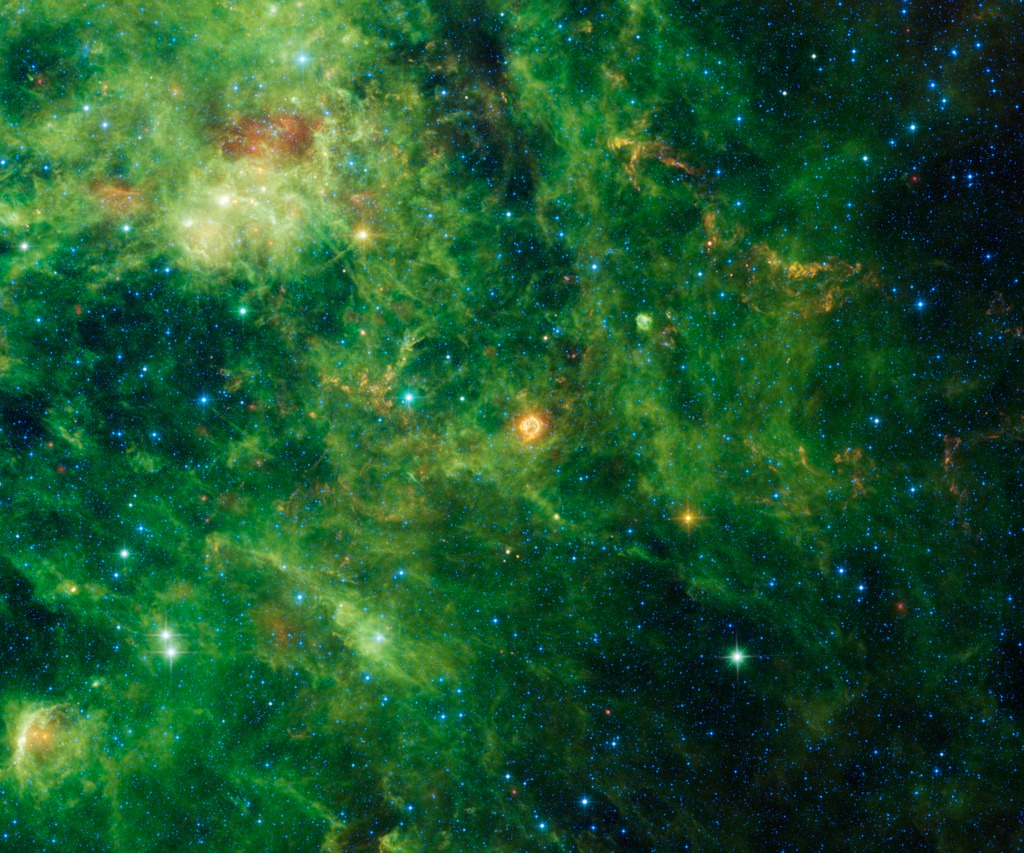Echoes of a Death Cry

Credit: NASA/JPL-Caltech/UCLA
Observation • March 15th, 2012
Over 11,000 years ago, a massive, supergiant star in our Galaxy came to the end of its life. The stars core collapsed to form an incredibly dense ball of neutrons, and its exterior was blasted away in an immense explosion astronomers call a supernova.
The light from this explosion first reached Earth from the direction of the constellation Cassiopeia in about 1667 AD. If anyone alive at the time saw it, they left no records. It is likely that large amounts of dust between the dying star and Earth dimmed the brightness of the explosion to the point that it was barely, if at all, visible to the unaided eye.
The remnant of this supernova was discovered in 1947 from its powerful radio emission. Named Cassiopeia A, it is one of the brightest radio sources in the whole sky. More recently, the Spitzer Space Telescope detected infrared echoes of the flash of light rippling outwards from the supernova in a series of pictures taken over a few years. This infrared image from the Wide-field Infrared Survey Explorer, or WISE, also shows the light echoes of the Cassiopeia A supernova remnant.
In the image, the central bright cloud of dust is the blast wave moving through interstellar space heating up dust as it goes. The blast wave travels fast at an average speed of about 18,000 kilometers per second (11,000 miles per second) but that is still only about 6% of the speed of light. The blast has expanded out to about a distance of 21 light-years from the original explosion. The flash of light from the explosion traveled faster - at the speed of light - covering over 300 light-years at the time that WISE took this picture. The orange-colored echoes further out from the central remnant are from dust heated as the supernova flash reached the dust centuries after the original explosion.
The colors used in this image represent specific wavelengths of infrared light. Blue and cyan (blue-green) represent light emitted predominantly from stars at wavelengths of 3.4 and 4.6 microns. Green and red represent light mostly emitted by dust at 12 and 22 microns, respectively.




